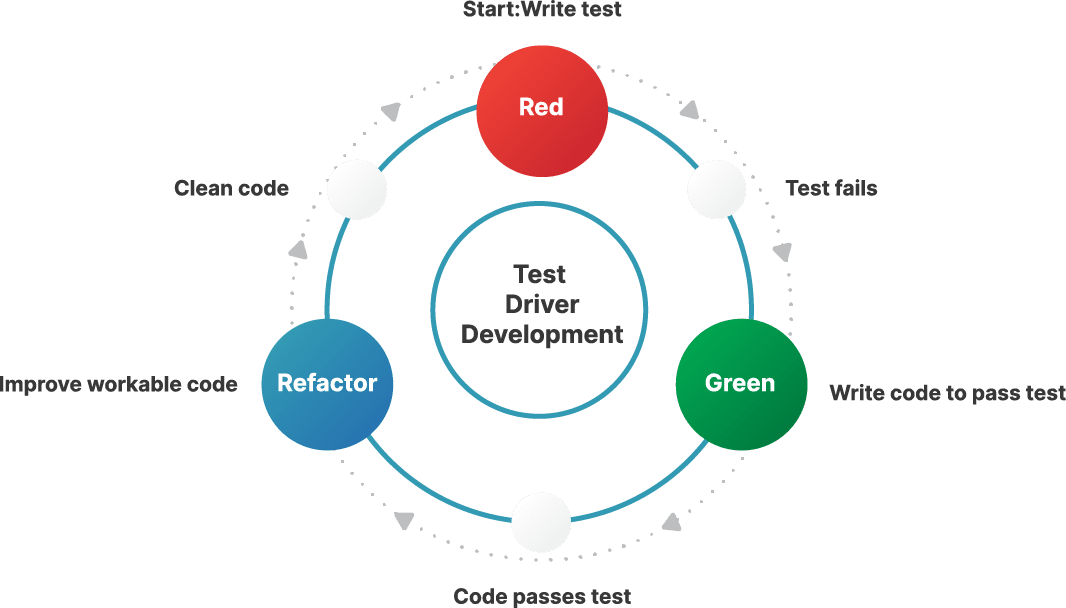According to Bloomberg, the Cloud ERP market is expected to reach $73 billion by 2026. Why the explosive growth? Organizations want to shift to the Cloud in order to have greater control and insight into operations like finance, planning, procurement, and assets. However, around 70% of ERP migration projects fail. According to McKinsey, the harsh reality is that more than 70% of digital transformation projects fail.
In this blog, we’ll spotlight the biggest challenges in achieving test driven ERP implementations and how to solve these challenges with the methodology of test driven development, as well as test automation. We’ll break down how successful TDD is enabled by test automation, and how they can work together to streamline your ERP testing processes.
The main point here? Test driven development in ERP implementation can significantly reduce rework and align ERP implementation more closely with your specific business goals. It leads to better adoption and change management, since end users are actively contributing to testing. However, you need a No-Code test automation platform like Opkey to implement test driven development.
What Is Test Driven Development
Test driven development is a software development approach where developers write automated tests before writing the actual code for a new feature or functionality.
The key principles of test driven development include:
- Writing tests first: The tests act as a specification for what the code should do and guide the development process.
- Testing in isolation: Each test should run independently of other tests and produce consistent results.
- Automating tests: Tests are automated, so they can be run repeatedly and quickly during development.
- Frequent testing: Tests are run frequently to detect regressions or issues early in the development process.
- Incremental development: The software evolves in small, incremental steps based on the test requirements.
TDD can lead to higher code quality. It also ensures that all features have corresponding test coverage. Moreover, early detection of defects reduces the time and cost associated with fixing bugs later in the development cycle.
However, implementing test driven development is challenging, and it may not be suitable for every development scenario.
Test Driven Development Benefits
- Reduce ERP implementation timelines: Since TDD involves test automation, it significantly shortens the testing cycles. This leads to significant reduction in ERP implementation timelines. QA teams can run the tests at a faster pace and analyze results to keep up with speed of development.
- Better change management: When ERP systems don’t work as expected, business users hesitate to adopt them. Since TDD approach involves frequent testing, issues get resolved in the early stages of development. This leads to better adoption of ERP.
- System stability & reliability: Test-driven ERP implementation ensures that the ERP system is thoroughly tested at each stage, reducing the likelihood of defects and errors. This leads to a higher quality and more reliable ERP system.
- Improved alignment with business requirements: A test-driven ERP implementation focuses on aligning the ERP solution with specific business requirements and processes. It ensures that the system meets the desired functionality and performance criteria. Since testing is involved early and at every stage, ERP aligns highly with the business objectives.
- Reduce rework: Testing at every stage of the ERP implementation process ensures that there should be minimal rework. This helps keep your project within deadlines and budgets.
Test-driven development follows a cycle of “red, green, refactor.”
- Red: The process starts by writing a test that checks for the existence or behavior of the feature to be implemented. This test initially fails because the code to support the feature does not exist yet. Hence, it is in a “red” state.
- Green: Here, developers write the minimum amount of code needed to pass the test. The goal is to make the test pass and get it to a “green” state.
- Refactor: Once the test passes, the developer can refactor the code to improve its design and efficiency while maintaining the test’s passing state.

Challenges in Implementing Test Driven ERP Implementations
- As we’ve discussed, the TDD process involves the writing of test cases prior to development. Writing test cases from scratch is a time consuming process and can lead to timeline overruns.
- Test automation is another requirement of TDD. However, most of the available test automation tools require coding knowledge to operate. Business users are non-technical folks and due to the steep learning curve often hesitate to use code based test automation tools.
- Organizations prefer phased ERP implementation. It requires frequent regression testing. to ensure that new changes do not negatively impact existing functionalities. Doing regression testing manually can be very challenging.
Learn more: How The Just Group streamlines regression testing with Opkey’s automated platform
- Due to phase-wise implementation, testing needs to be performed frequently. However, with manual testing approaches, QA teams couldn’t keep up with the speed of development.
- Test cases also need to be updated and maintained as the codebase evolves. This ongoing maintenance can become a burden if not managed effectively.
Opkey: Solving Test Driven Development Challenges
Since you’re now aware of the challenges of testing ERP implementations, let’s present to you our solution – Opkey. It is a codeless test automation platform designed to support test driven ERP implementation. Opkey leverages artificial intelligence, predictive analysis, and machine learning to supercharge your testing efforts while minimizing risks. Here’s how:
- No-code automation: Opkey is a zero code test automation platform. It supports ERP implementation best practices as No-Code test automation allows business users to write test cases without having programming knowledge.
- Pre-built accelerators: Unlike other platforms, Opkey doesn’t allow QA teams to start from scratch. Opkey offers 30,000+ pre-built test accelerators across 14+ ERPs, including Oracle EBS, Oracle Cloud, Dynamics 365, Workday, Coupa, and Salesforce. Opkey also offers 1-click automation of manual test cases to make testing effortless.
- Autonomous healing of scripts: Opkey’s builtin AI automatically detects the impacted test scripts and heals them autonomously without requiring human intervention. This significantly reduces test maintenance efforts.
- Model based testing: Opkey’s model based testing perfectly addresses the problem of risk coverage. Opkey performs test gap analysis and suggests test cases that need to be run to keep business risks at bay.
- End-to-end coverage: Opkey offers you end to end coverage by supporting integration testing across multiple technologies – desktop, Citrix, API, cross browser, mobile, and legacy apps.
- Performance testing automation: Opkey supports automated load testing and helps you identify whether your Cloud ERP solution is performing at peak load conditions.
- Test data management: Opkey provides relevant data sets that can be used to test different modules of an ERP.






